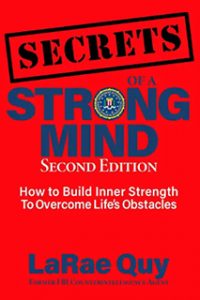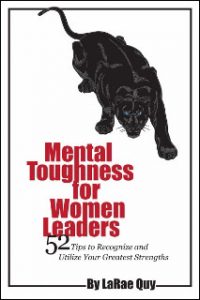The topic was How To Read People and it was one of the best interrogation seminars I ever attended. It was led by a muscular man with a face that looked as though chiseled out of a block of wood.
A member of Special Forces, he told me and 30 other FBI agents that the best way to elicit information from another person was to learn how to read people. That, he said, requires two things: careful observation and developing rapport.
I was stunned. I expected all sorts of tips on how to be sneaky with my questions and intimidating in my manner.
“Always remember that you cannot read people accurately if you don’t spend time with them and if they don’t trust you,” he said.
As a business owner and entrepreneur, you do not need to be a top-notch interrogator to figure out what is going on in someone’s head. The signals are always there; all you need to do is know what to look for.
Here are 9 FBI helpful tips on how to read people:
1. Create A Baseline If You Want To Accurately Read People
Spend enough time around a person to get to know their quirks and patterns of behavior. For example, some people clear their throat, look at the floor when talking, cross their arms, scratch their head, stroke their neck, squint, pout, and jiggle their feet frequently.
In others, however, this same behavior might be indicative of deception, anger, or discomfort.
Before you can make any judgments or assessments about an individual, create a baseline of their normal behavior.
2. Look For Aberrations
Start looking for inconsistencies between the baseline you’ve created and the person’s words and gestures.
For example: your boss normally nods when in conversation with others but when you start talking to her, the nodding stops. Pay attention! Is it you, or is the topic you’ve introduced?
3. Notice Clusters of Gestures
No one gesture or word necessarily means anything; but when several behavioral aberrations are clumped together, take notice.
For example, not only does your boss stop nodding, but she also angles her body away from you, leans back, and compresses her lips.
You are reading her accurately: she has a problem—either with you or with the topic that you’ve introduced into the conversation.
4. Compare And Contrast
Move your observation up a notch to see if/when she repeats that same behavior with others in your group.
Continue to observe her as she interacts with others in the room. Does her expression change? Has her posture and body language changed? Have you noticed a specific change in her behavior toward you?
5. Walk This Way
Notice the way a person walks. People who shuffle along, lack a flowing motion in their movements, hug themselves, and keep their head down, often lack self-confidence.
Do not be that person! Walk with alertness and purpose, and keep your shoulders back and head held high. When you do, you are signaling to the world that you have an important place to be and an important task to accomplish.
6. Mirror, Mirror On The Wall
Mirror neurons are built-in monitors in our brain that reflect other people’s states of mind.
We are wired to read each other’s bodies. A smile activates the smile muscles in our own faces, while a frown activates our frown muscles.
According to Paula Niedenthal in Psychology of Emotion, we are programmed to observe each other’s emotions so we can appropriately react, empathize, or assert our boundaries.
When we see someone we like, our eyebrows arch, facial muscles relax, head tilts, and blood flows to our lips making them full.
If this is not reciprocated, that person is sending you a clear message: they do not like you and/or are not happy with your performance.
7. Identify The Strong Voice
Confident people have strong voices. Do not confuse a loud voice with a strong one.
Confidence and power are kissing cousins.
Around a conference room table, the most confident person is very likely to also be the most powerful one: expansive posture, strong voice, and a big smile. The most powerful person is not always the one sitting at the head of the table.
Make sure your body language and behavior make it clear that you are confident and that your message has heft.
8. Use Of Action Words
As an FBI agent, I always looked for clues on what people were thinking, and words were the closest way for me to get into another person’s head.
Words represent thoughts so identify the word that is freighted with meaning.
For example, if your boss says she, “Decided to buy brand X,” the action word is decided. This single word tells you that your boss is 1) not impulsive, 2) weighed several options, and 3) thinks things through.
Another example: if your colleague says, “I won another award,” the action word is another. She is telling you that she 1) has won awards before, 2) is bolstering her self-esteem, and 3) wants you to know she is a winner.
9. Spot Personality Types
Each of us has our own unique personalities, but there are basic clarifications that can help you relate to another person so you can read them accurately.
- Are they an introvert or extrovert?
- Are they driven by relationships or by significance?
- How do they handle risk and uncertainty?
- How is their ego fed?
- What are their behaviors when they are stressed?
- What are their behaviors when they are relaxed?
It takes time to learn how to read people accurately. Start practicing now on people you know and with whom you interact. You can develop the skill by constantly listening and observing actively in everyday life.
What tips would you add?
© 2015 LaRaeQuy. All rights reserved.
You can follow me on Twitter, Facebook, Instagram, AND LinkedIn
Are you mentally tough? Here is my FREE Mental Toughness Assessment
Get my new book, “Secrets of a Strong Mind (second edition): How To Build Inner Strength To Overcome Life’s Obstacles”

Author of “Mental Toughness for Women Leaders: 52 Tips To Recognize and Utilize Your Greatest Strengths”

Image by Rizal Deathrasher from Pixabay


LaRae, Great advice. The best way to know people is to get to know them. It takes time and genuine effort. Most of us have a facade layer which we use for protection. It takes deliberate effort to get behind the mask, but it’s so worth it.
Excellent points LaRae! I never thought about what is a quirk for someone may just be an everyday body response for another. Learning how people behave and then one day doing things differently is definitely a red flag. This all points to us being aware of others and their typical body language.
Just love your stories LaRae! Thanks!
“Always remember that you cannot read people accurately if you don’t spend time with them and if they don’t trust you,” .. This couldn’t be truer. Some time people Measure your success to get info in one meeting . Or even two, and that is not the case at lease most of time. You always need to have trust,and the other part that is great to mention is the fact the way people would walk , thank you . Added info to the brain is great